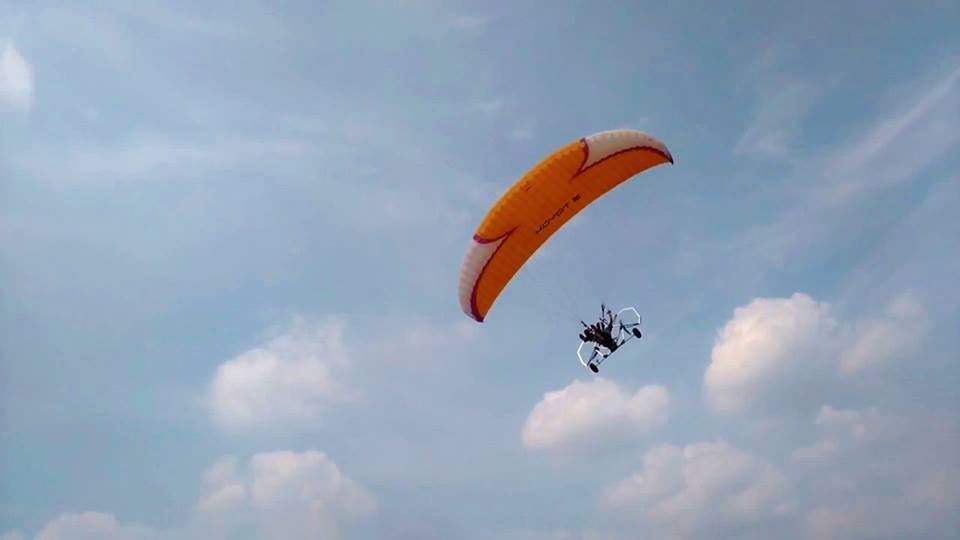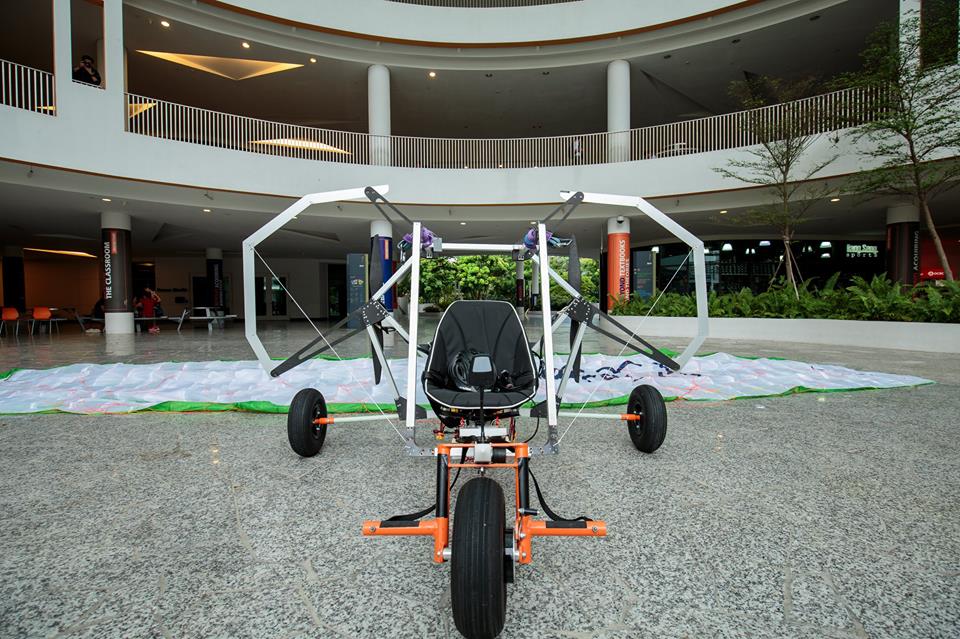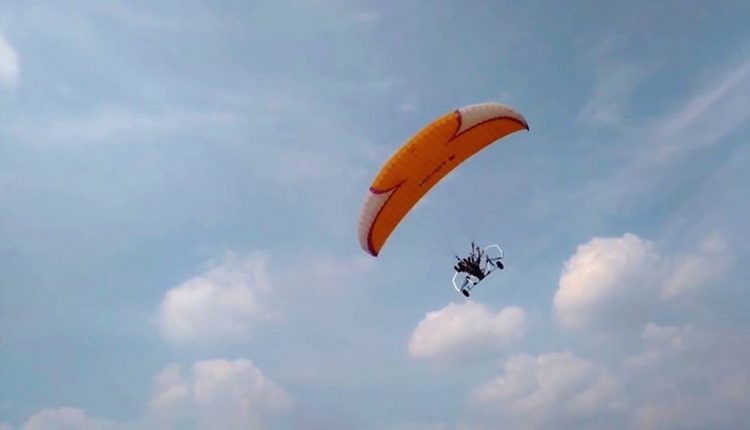A team of engineering students from the National University of Singapore (NUS) decided to take on a challenge from the National Geographic Channel. In doing so, the students successfully designed and built the world’s lightest electric paraglider trike, which they call The Delta.

The aircraft comprises two rear-mounted propellers, which are horizontally arranged and driven by a motor. The craft, which is powered by Lithium polymer batteries, is the lightest aircraft in the world that can take off and land with wheels while carrying an adult pilot.
The NUS team envisions their invention as a safe, clean and simple way to engage in our dreams of flying.
The electric paraglider trike was built in conjunction with FrogWorks, a design and prototyping studio for green vehicles founded by and for NUS students in the Design-Centric Programme (DCP) at the NUS Faculty of Engineering.
The Delta was built specially for the National Geographic Channel’s new series “Machine Impossible,” which involves the challenge of building different flying vehicles. The vehicle could take any shape or form, as long as it flies, fits the budget, and is a lot of fun.

“The challenge in designing and building The Delta was three-fold: we had to find the lightest airfoil possible, a wing, blade or sail crucial for flight, which we found in a conventional cloth paraglider; we had to find the lightest motors to provide enough thrust for The Delta to be airborne; and we had to build it so that it is light enough to fly yet sturdy enough to be safe,” said Dr. Rangarajan Jegadeesan, one of the project supervisors from DCP and a lecturer at the Engineering Design & Innovation Centre, NUS Faculty of Engineering.
The 108-lb Delta is capable of carrying one person up to 165 lbs. The current prototype can fly up 22 mph under normal wind conditions and for about 10 minutes at a time.
“Designing and building The Delta was an experience like no other. We had a great learning experience as we went about tackling various aspects of the project, from constructing the physical frame to designing and implementing the aircraft’s electric energy system and pilot safety system. It was an engineering challenge we greatly relished,” said Chan Wai Yang, a third-year engineering student at NUS.
While the aircraft seems simple, the team says it is sturdy – it has a custom-built chassis with wheels and steering, a seat for the driver, two electric motors, two propellers, and it incorporates an off-the-shelf paraglider. The Delta also has three wheels, where its two back wheels are supported by fiberglass rods suspension, while the front wheel is connected to the steering – an inspiration that the team took from the familiar children tricycles.
The aircraft is driven by two 8 kilowatt brushless electric motors, which are arranged horizontally behind the pilot. Each motor drives a 31-inch propeller and two 14S Lithium polymer batteries provide the electricity needed to power the motors. The paraglider that is attached at the back of The Delta provides the lift required for upward takeoff as it catches the wind when the aircraft moves forward.
Included are features to keep the pilot safe, such as a roll cage to protect the pilot, fiberglass rods to cushion the landing, barrier nets between the pilot and propellers, and engine kill-switches for the pilot in case of an emergency.
“We are thrilled to have this opportunity to build an all-new machine for the National Geographic Channel. Designing and building The Delta allowed us to push the limit of our creativity and engineering know-how, while building upon our experience from previous successful FrogWorks projects. We will continue to fine-tune The Delta, and at the same time, we also look forward to creating more sustainable recreational vehicles, be it on land, at sea or in the air. Such projects have tremendous values in the education of our students in Engineering,” said Associate Professor Martin Henz, project supervisor and adviser at the DCP at NUS.


Comments are closed, but trackbacks and pingbacks are open.